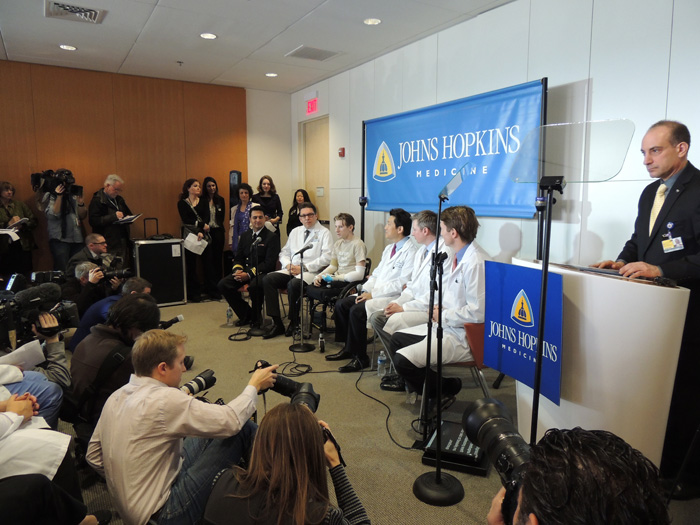Double Arm Transplant Restores Function, Quality of Life for Soldier
Every day, men and women ages 18 and over volunteer to serve in the U.S. Armed Forces. These brave service members protect the citizens of the United States from enemies foreign and domestic, and also provide humanitarian support around the world. With advances in protective equipment, battlefield evacuation and medical care, service members are surviving injuries that would previously have resulted in death, and they are learning how to live without one or more limbs. Recent advances in regenerative medicine provide hope to these service members who look toward a future where they may once again have arms and hands that they can use.
Since 2008, the Armed Forces Institute of Regenerative Medicine has been bringing together the world's leading scientists and physicians from academia and industry to develop innovative medical solutions to fully restore Warriors with traumatic injuries. During this time, the Department of Defense and the U.S. Army Medical Research and Materiel Command have provided and managed more than $6.5 million in hand transplant research, to include the double-arm transplant performed at Johns Hopkins Hospital in Baltimore, Md. Dec. 18.
"A team of physicians and nurses helped to restore the physical and psychological well-being of someone most deserving," said Dr. W.P. Andrew Lee, director of the Johns Hopkins School of Medicine's Department of Plastic and Reconstructive Surgery, and head of the team that performed the transplant. "Brendan Marrocco had lost both arms and both legs serving our country nearly four years ago."
Marrocco, a sergeant in the U.S. Army, sustained his injuries in Apr. 2009 when an explosive-fired projectile entered his vehicle. Marrocco was the first service member during the war to survive a quadruple limb amputation.
"[Marrocco's] hope to lead a normal life has been boosted by the first double-arm transplant at Johns Hopkins," said Lee.
The DoD invests in medical research and development efforts that have the most promising ability to benefit our troops injured in combat.
"Hand transplants, such as the bi-lateral procedure performed on Sgt. Marrocco, have the potential to restore not just function but also quality of life for our injured service members," said Dr. Smita Bhonsale, deputy director for Science and Technology for the AFIRM.
"It's such a big thing for my life and it is just fantastic," said Marrocco at the Johns Hopkins Press Conference Jan. 29. "It has given me a lot of hope for the future."
Marrocco, now 26 years old, continues to maintain a positive attitude and is looking forward to reaching for the goals he has set for himself and taking his ambitions as far as he can.
"One of my goals is to hand-cycle a marathon," said Marrocco.
While the road to more functional use of his arms will be slow, Marrocco is confident that he will get there.
"The nerves regenerate at the maximum speed of one inch per month," said Lee. "Considering where we did the transplant, and where the nerves are connected, there are many, many inches and indeed many, many months ' a couple years for that matter ' before function will return."
Marrocco and Lee closed out the press conference with a message to fellow amputees to not give up hope. Advances in medicine are made every day.
The AFIRM continues to support advances in regenerative medicine, generating hope for injured service members.















